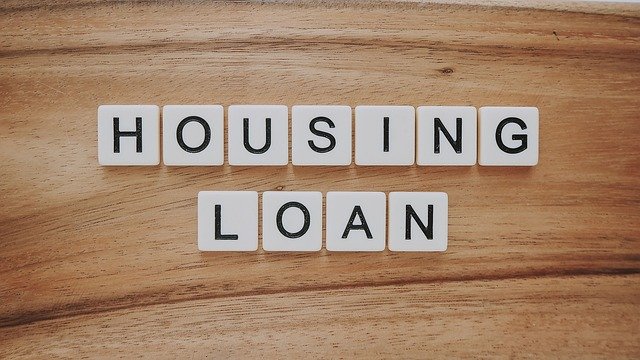Understanding Reverse Mortgages: Options and Applications
A reverse mortgage allows homeowners aged 55 and older to convert part of their home equity into tax-free cash without selling their property. This financial tool can provide retirement income, fund renovations, or cover healthcare costs. While traditional reverse mortgages apply to primary residences, specialized options exist for unique situations. Understanding the different types, application processes, and financing solutions helps Canadian homeowners make informed decisions about leveraging their home equity during retirement years.

What Is a Reverse Mortgage on Commercial Property?
While traditional reverse mortgages are designed exclusively for primary residential properties, some homeowners wonder whether similar arrangements exist for commercial real estate. In Canada, standard reverse mortgage products through providers like HomeEquity Bank (CHIP Reverse Mortgage) are restricted to owner-occupied residential homes. Commercial properties, including rental buildings, retail spaces, or office complexes, do not qualify for conventional reverse mortgage programs.
However, property owners seeking to unlock equity from commercial real estate may explore alternative financing solutions. Commercial equity loans, business lines of credit, or refinancing options can provide access to capital tied up in commercial properties. These products function differently from residential reverse mortgages, typically requiring ongoing payments and business income verification. Consulting with commercial mortgage specialists helps determine which financing structure aligns with specific business objectives and cash flow requirements.
Can You Get a Reverse Mortgage for New Construction?
Reverse mortgages in Canada are generally available only for existing homes that meet specific age and condition criteria. New construction properties present unique challenges for reverse mortgage eligibility. Lenders require homes to be fully completed, occupied as primary residences, and meet minimum property standards before approving reverse mortgage applications.
Homeowners planning to build new homes and use reverse mortgages for financing typically need alternative approaches. Construction loans or traditional mortgages finance the building phase, and once construction completes and the homeowner establishes residency, they may apply for a reverse mortgage to refinance the existing debt. This two-step process allows access to home equity after meeting occupancy requirements. The property must also undergo appraisal to determine current market value, which influences the maximum borrowing amount available through the reverse mortgage program.
Understanding Proprietary Reverse Mortgage Products
Proprietary reverse mortgages are private loan products offered by financial institutions outside government-insured programs. In the United States, these products provide alternatives to federally insured Home Equity Conversion Mortgages (HECMs) and may offer higher loan amounts for expensive properties. In Canada, the reverse mortgage market operates differently, with fewer proprietary options compared to the American landscape.
HomeEquity Bank dominates the Canadian reverse mortgage market with its CHIP program, which functions as a proprietary product not backed by government insurance. Other financial institutions occasionally offer similar equity release products with varying terms, interest rates, and qualification criteria. Proprietary reverse mortgages may feature different fee structures, repayment terms, or borrowing limits compared to standard offerings. Homeowners exploring these options should carefully compare interest rates, which typically range from 7% to 10% annually, along with setup fees, appraisal costs, and legal expenses. Independent financial advice ensures borrowers understand long-term implications on estate value and inheritance planning.
| Provider | Product Type | Estimated Interest Rate | Key Features |
|---|---|---|---|
| HomeEquity Bank | CHIP Reverse Mortgage | 7.00% - 9.50% | No monthly payments, retain home ownership, tax-free funds |
| Private Lenders | Proprietary Equity Release | 8.00% - 10.50% | Flexible terms, higher loan amounts for luxury properties |
| Credit Unions | Home Equity Products | 6.50% - 9.00% | Member-focused service, competitive rates, regional availability |
Prices, rates, or cost estimates mentioned in this article are based on the latest available information but may change over time. Independent research is advised before making financial decisions.
Exploring Reverse Mortgage Finance Solutions
Reverse mortgage finance solutions provide retirement-age homeowners with multiple ways to access home equity. Beyond receiving a lump sum payment, borrowers can structure funds as monthly income, establish a line of credit, or combine these options. Each approach offers distinct advantages depending on financial goals, retirement income needs, and estate planning considerations.
Monthly payment options create predictable cash flow to supplement pensions or government benefits. Line of credit arrangements provide flexibility, allowing homeowners to draw funds as needed while minimizing interest accumulation on unused portions. Lump sum payments suit specific purposes like eliminating existing mortgage debt, funding home accessibility modifications, or covering significant medical expenses. Financial advisors help determine optimal disbursement strategies based on individual circumstances, tax implications, and long-term financial security objectives. Understanding how interest compounds over time remains essential, as reverse mortgage balances grow throughout the loan term until repayment occurs through home sale or estate settlement.
Navigating the Reverse Mortgage Application Process
The reverse mortgage application process in Canada involves several steps designed to protect borrowers and ensure informed decision-making. Applicants must be at least 55 years old, own their home outright or have substantial equity, and occupy the property as their primary residence. The process begins with independent legal and financial counseling, which Canadian regulations require to confirm borrowers understand terms, costs, and long-term implications.
Following counseling, homeowners submit applications including property information, identification documents, and proof of home insurance. Lenders arrange professional home appraisals to determine current market value and assess property condition. Appraisal results influence maximum loan amounts, typically ranging from 20% to 55% of home value depending on borrower age and property location. Legal review follows, with independent lawyers explaining mortgage terms, registration requirements, and homeowner obligations. Setup costs including legal fees, appraisal charges, and administrative expenses generally total between 2% and 4% of the loan amount. Completion typically occurs within four to eight weeks, after which funds become available according to the chosen disbursement method.
Key Considerations Before Proceeding
Reverse mortgages offer valuable financial flexibility but require careful consideration of long-term impacts. Interest accumulates over time, reducing equity available for future needs or inheritance. Homeowners remain responsible for property taxes, insurance, and maintenance, with failure to meet these obligations potentially triggering loan default. The growing loan balance may eventually consume most or all home equity, leaving minimal estate value.
Alternatives worth exploring include downsizing to a smaller home, traditional home equity lines of credit, or government assistance programs. Each option presents different advantages, costs, and eligibility requirements. Comprehensive financial planning, including discussions with family members about inheritance expectations, helps ensure reverse mortgages align with overall retirement strategies and personal values. Professional guidance from independent financial advisors, estate lawyers, and mortgage specialists provides clarity and supports informed decision-making throughout the evaluation process.




